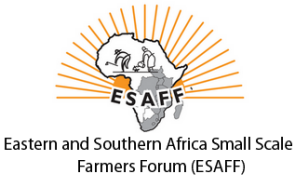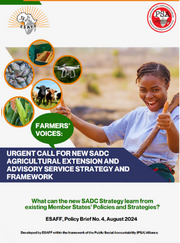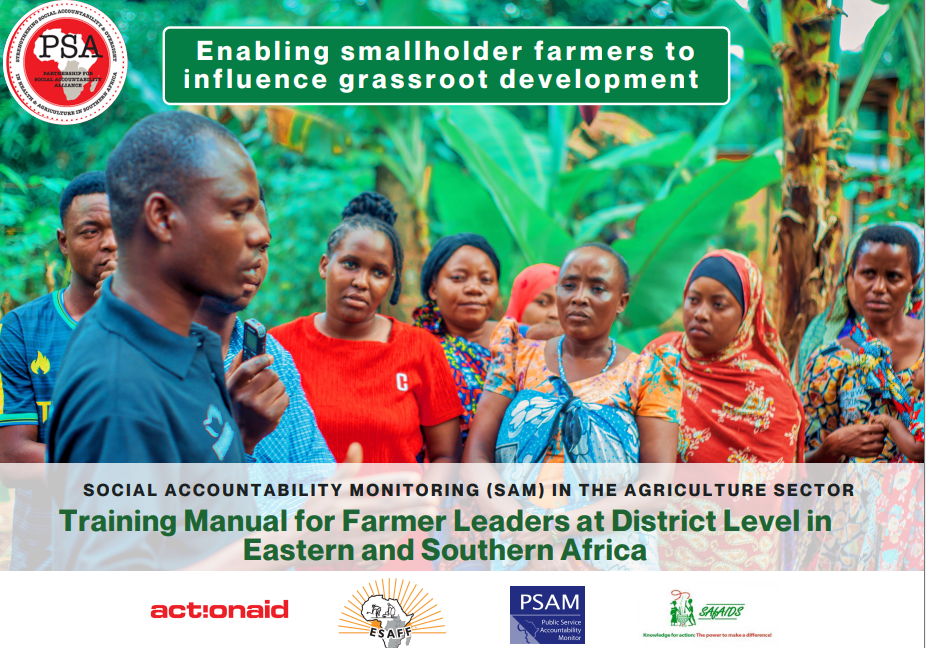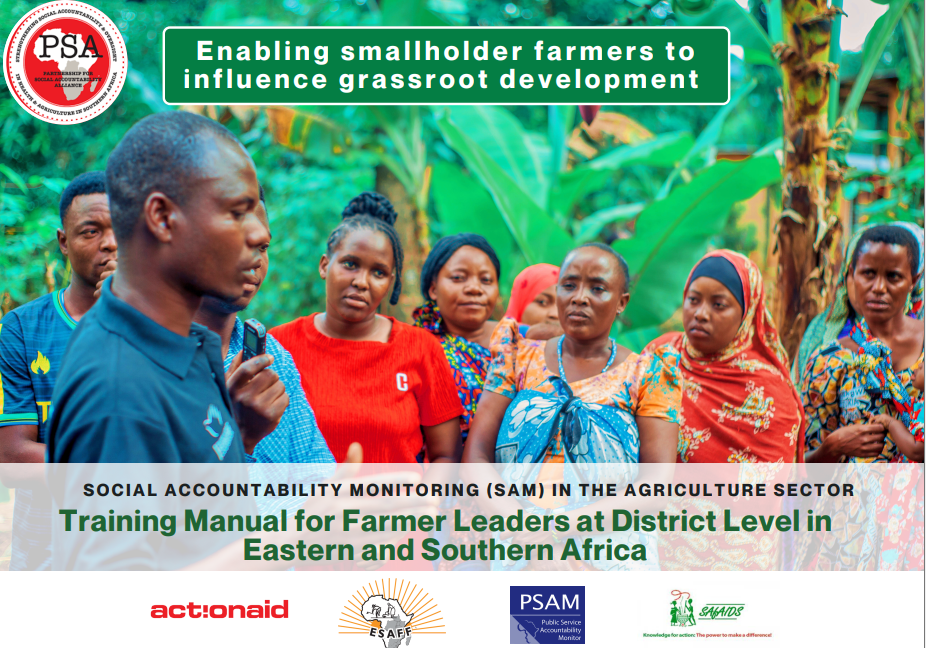Is there really a future for Africa’s smallholder farmers? Yes, but it’s not ros
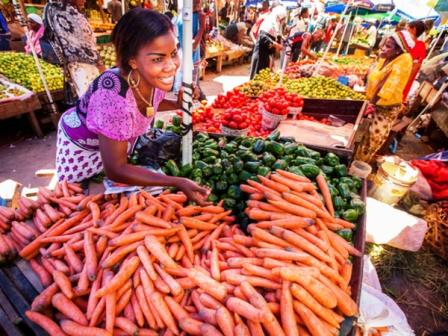
27/01/2015
BY SAMANTHA SPOONER
ALL smallholder farmers do is hold up development, it’s not sustainable”, said the development engineer, referring to Kofi Annan’s talking points to leaders at the World Economic Forum, urging Africa’s governments to “put smallholder farmers at its heart”.
It was an unsettling statement considering the countless groups and governments that have created strategies and interventions, from technology to market development, in order to stimulate growth in smallholder agriculture – a key driver of “Africa Rising”.
There’s been a general consensus by development practitioners that growth in agriculture provides a foundation for overall growth of the economy, and that this in turn will be driven by the smallholder farmer, as opposed to large scale production.
The case for the smallholder farmer is based on the argument that the yields per hectare are higher on their farms, that land productivity is declining on larger farms, and labour supervision costs make hired labour expensive relative to family labour.
In Africa’s case, since there are over 600 million people in sub-Saharan Africa that depend on smallholder agriculture (SMA), it remains an essential basis for economic development. These smallholder farmers are expected to help ensure food and nutrition security, to grow jobs and boost economies – all while helping themselves. After all, it is believed that when the sector becomes more mature, helped along by the application of technology into production, SMA can provide savings that will then be used in other sectors and introduce a base to grow out of, lifting smallholder farmers out of varying degrees of poverty.
These ideas, however, have translated into little on the ground. At a conference hosted by Trust Africa (an African philanthropic foundation) in 2014, on “strengthening smallholder agriculture in Africa”, Professor Sam Moyo of the African Institute for Agrarian Studies said that “in spite of many years of independence, liberation…I still doubt that most of our policy makers, scholars, and civil society actors really believe SMA is in fact feasible and a real or concrete route for transforming our society.”
This is despite the global agreements such as the creation of the Comprehensive Africa Agriculture Development Programme (CAADP) at the 2003 African Union Summit which also culminated in the Maputo Declaration, under which Africa’s governments committed to spending at least 10% of their national budgets on agriculture. In 2014 the subsequent Malabo Declaration was announced and African leaders re-affirmed their intention to devote 10% of their national budgets to agricultural development – almost as if they didn’t fully commit or believe in it the first time round considering after 10 years only 13 countries had met or surpassed the 10% target.
Lack of information
One of the reasons for the lack of faith that SMA can drive development lies in the paucity of information on the contribution of small-holder farmers to Africa’s economies. At times, key data on areas cultivated and yields are too often based on the estimates of field staff, rather than actual measurements of its contributions to society. This would bring into question the viability of the argument that the yields per hectare are higher on smaller farms.
There is also the question of growing productivity. Looking at growth in productivity, which would involve the adoption of certain techniques such as fertiliser or improved seeds, there is the argument that larger scale farms may be better at it.
The ability to attain finance, for example to acquire new technologies, could also favour larger farms. Small farmers may not have enough land to offer the necessary collateral for loans which larger enterprises are better placed to secure; larger farms will be more prepared to offer more evidence such as audits and valuations. They will also be better positioned to take advantage of storage, trading and marketing opportunities.
However, what cannot be ignored is that whilst agriculture makes up the bulk of African economies, it is smallholder farming, including crops and livestock, that makes up from 60% to 80% of rural income. By sidelining smallholder farmers and focusing on large-scale production, governments would have to deal with hundreds of millions of landless rural workers, huge levels of poverty, income inequality and unemployment which are all counter-productive to growth.
Full-scale commercialisation would not even be a viable “replacement” today because of restrictions on access to land, not to mention the huge hurdles associated with doing business in the majority of African countries – there are currently seven African countries in the bottom 10 of the “Ease of Doing Business” index.
The problem is that much of SMA is today characterised by low yields, limited commercialisation, few signs of rapid productivity growth and population-land ratios that are not declining. Therefore, supporting SMA in Africa is currently perceived as just supporting rural development; it will only contribute to overall growth when individual governments are able to critically identify and implement agricultural policies that sustainably increase agricultural productivity, reduce harmful tariffs, improve access to capital and infrastructure, and provide an adequate market structure.
There are examples of this taking root. Rwanda, for instance, is considered to be the front-runner of African countries in embracing CAADP and last year announced that it had managed to lift one million people out of poverty as a result. According to the government, it did this by pumping resources to support specific value chains, increasing access to cultivable land, promoting land consolidation, and mainstreaming youth and women in targeted value chains.
Other African countries that have also sought to change their agricultural landscape include Malawi where the Ministry of Agriculture and local NGOs trained over 120,000 farmers to implement agro-forestry systems, increasing yields by one to four tonnes per hectare. Sierra Leone meanwhile increased access to credit for farmers, by supporting the creation of farmer-owned banks in villages. Mauritania implemented land tenure systems to improve access to land and insurance interest rates dropped from 13% to 6%.
Big threat
A big threat to Africa’s smallholder farmers comes from the “super farm” deals that some African governments have embraced. In these deals a foreign government, or a company often acting for a government, takes a long lease on a huge area of land. Controversial deals include ones between Daewoo Logistics of South Korea who sought to lease about half the land of Madagascar and the controversial investment deal by Heilberg to acquire 400,000 hectares in Southern Sudan. There is little justification for these agreements, which would threaten the future of Africa’s smallholder farmers, especially when they preserve the right of a super farm to export food to its lease holding country when it’s own citizens go hungry.
Nonetheless, there is a potentially bright future alongside commercial activities. Even with optimistic scenarios for SMA in Africa, it will take time to modernise and complete economic transformation of Africa’s agricultural sector. This validates the argument that perhaps the discourse should not just focus on large scale, that commercial enterprises could also be promoted alongside SMA and that they should not be viewed as mutually exclusive.
With strong cooperatives and protection of smallholder farmers rights, commercial enterprises have the potential to open doors for small farmers, creating an enabling environment for the standardisation of processes, marketing and allowing for gains in knowledge and innovation which will become more accessible to SMA.
















